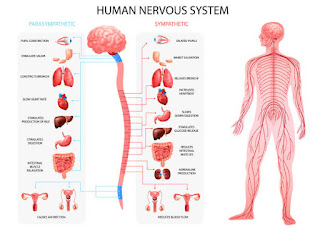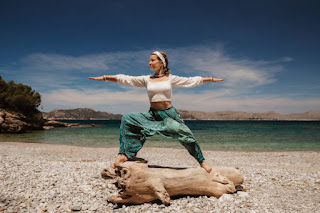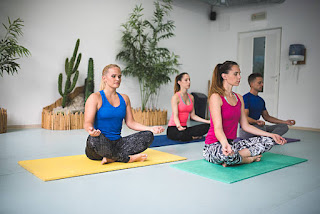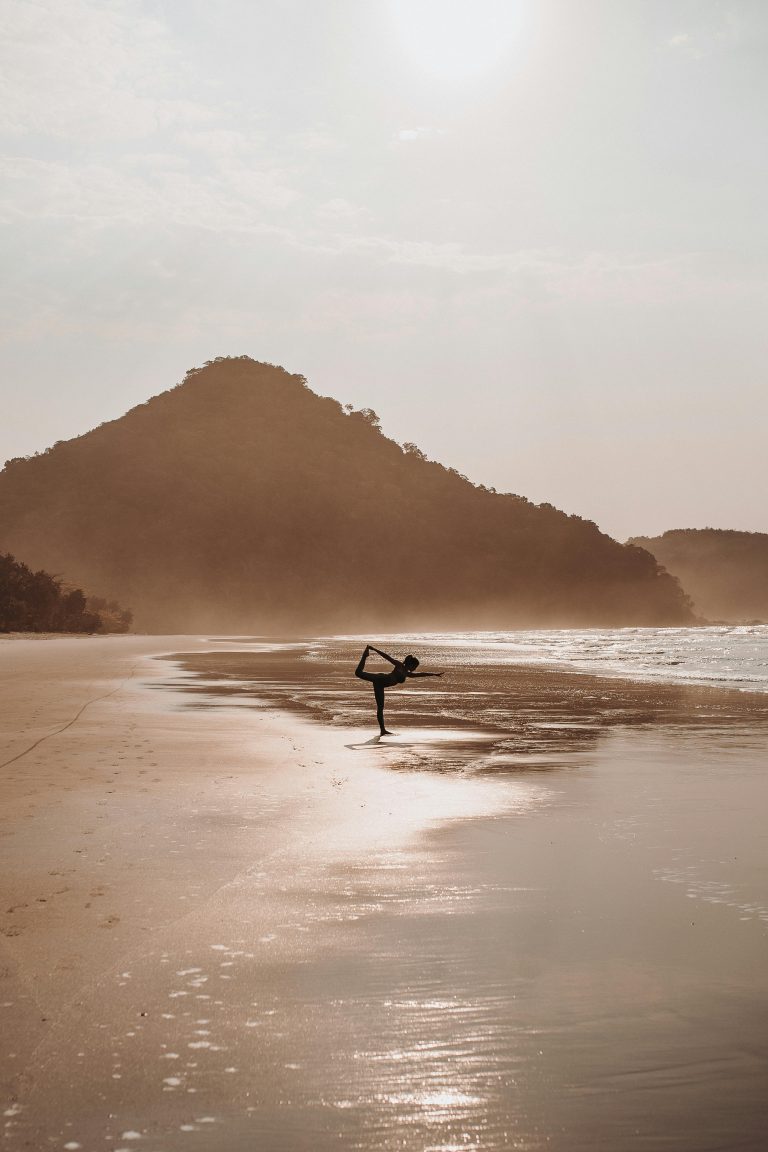Yoga and the Nervous System: A Deep Dive into Polyvagal Theory
Yoga and the Nervous System: A Deep Dive into Polyvagal Theory
In recent years, yoga has gained recognition as a profound tool for managing stress and supporting trauma recovery. By influencing the autonomic nervous system (ANS), yoga helps us respond more resiliently to life’s challenges. Polyvagal Theory, developed by Dr. Stephen Porges, provides a scientific framework to understand how our nervous system operates, particularly in the face of stress or trauma. This article explores how yoga interacts with the ANS through the lens of Polyvagal Theory and offers practices to support healing and resilience.
Understanding the Autonomic Nervous System
The autonomic nervous system is responsible for regulating many unconscious body functions, such as heart rate, digestion, and respiratory rate. It comprises two main branches:
- The Sympathetic Nervous System (SNS): Often called the “fight-or-flight” system, the SNS activates our body’s stress response to help us confront or flee from threats.
- The Parasympathetic Nervous System (PNS): Known as the “rest-and-digest” system, the PNS promotes relaxation, digestion, and healing. It plays a vital role in regulating calmness and recovery.
In addition to these branches, Polyvagal Theory introduces a third layer, the social engagement system—a unique aspect of the vagus nerve that helps us connect socially and feel safe in the presence of others.
A Brief Overview of Polyvagal Theory
Dr. Porges’ Polyvagal Theory highlights the vagus nerve’s critical role in emotional and physical regulation. This nerve has two primary branches within the parasympathetic nervous system:
- Dorsal Vagal Complex (DVC): Linked with immobilization and shutdown, this response often occurs when we feel overwhelmed or perceive a situation as hopeless.
- Ventral Vagal Complex (VVC): Associated with social engagement, safety, and connection, the VVC helps us feel calm and secure, fostering healthy interactions and resilience.
When we experience stress or trauma, the nervous system may fluctuate between these states—fight-or-flight, freeze, or social engagement—depending on the perceived threat and context. Yoga can help regulate these responses by activating the VVC and soothing the SNS, facilitating greater emotional stability and healing.
How Yoga Influences the Nervous System
Yoga’s physical postures, breathing techniques, and meditative practices create a direct pathway to calming the nervous system. Here’s how each component of yoga can impact our autonomic balance:
1. Physical Asana Practice
- Grounding Poses (e.g., Tadasana, Child’s Pose): Grounding postures encourage a sense of stability, providing a safe container for nervous system regulation. They can help the body move out of hyper-arousal (SNS dominance) and into a state of relaxation.
- Backbends (e.g., Cobra, Bridge Pose): Gentle backbends open the chest, stimulating the VVC and helping to release tension. These poses encourage a balance between alertness and calm.
2. Breathwork (Pranayama)
- Slow, Deep Breathing (e.g., Dirga Pranayama): Slow breathing activates the parasympathetic response, lowering heart rate and calming the mind. Deep, diaphragmatic breaths engage the vagus nerve, facilitating relaxation.
- Alternate Nostril Breathing (Nadi Shodhana): This practice can harmonize the left and right brain hemispheres, helping the body to move between the sympathetic and parasympathetic states with greater ease.
3. Meditation and Mindfulness Practices
- Body Scans and Progressive Relaxation: These meditative techniques build awareness of the body and sensations, reducing hyper-vigilance and enhancing the VVC’s calming influence.
- Loving-Kindness Meditation: By fostering a sense of compassion, loving-kindness meditation can support the social engagement system, helping individuals feel safer and more connected.
Yoga as a Tool for Trauma Recovery
Trauma can leave an imprint on the nervous system, affecting how we respond to stressors. Yoga supports trauma recovery by fostering safety, body awareness, and self-regulation. Here’s a closer look at how yoga can be integrated as part of a trauma recovery journey:
- Rebuilding a Sense of Safety
Trauma often disrupts our sense of safety, making us hyper-aware of potential threats. Gentle, grounding poses can help trauma survivors reconnect with their body in a way that feels secure. Yoga sessions focused on comfort and safety create a non-judgmental space for healing. - Improving Self-Regulation
Through consistent practice, yoga helps individuals regulate their nervous system responses more effectively. By alternating between activating and calming poses, yoga encourages the body to transition between sympathetic and parasympathetic states, training the nervous system to respond flexibly. - Enhancing Mind-Body Connection
Trauma can often cause a disconnection from the body. By focusing on physical sensations and mindful movement, yoga encourages reconnection with the body in a positive, healing way. - Building Resilience Through Community
Practicing yoga in a group setting can activate the social engagement system, as connecting with others in a calm, supportive environment fosters safety and trust.
Practical Yoga Sequence for Nervous System Regulation
This short sequence is designed to help balance the nervous system, promote relaxation, and enhance feelings of safety:
- Tadasana (Mountain Pose): Stand tall with feet hip-width apart. Root down through your feet, bringing awareness to your breath.
- Balasana (Child’s Pose): Sink back into Child’s Pose, allowing your forehead to rest on the mat. Focus on deep belly breathing.
- Setu Bandhasana (Bridge Pose): Lie on your back and lift your hips gently. This pose encourages chest opening and activates the VVC.
- Sukhasana (Easy Pose) with Deep Breathing: Sit comfortably with a tall spine. Practice slow, mindful breathing, allowing your body to relax with each exhale.
Additional References for Readers
I tried to find free resources that are not behind a paywall, enjoy. For those interested in delving deeper into yoga, trauma recovery, and Polyvagal Theory, here are some recommended resources:
- Porges, S. W. (2011). The Polyvagal Theory: Neurophysiological Foundations of Emotions, Attachment, Communication, and Self-Regulation. New York: W.W. Norton & Company.
- Emerson, D., & Hopper, E. (2012). Overcoming Trauma through Yoga: Reclaiming Your Body. Berkeley: North Atlantic Books.
- van der Kolk, B. A. (2014). The Body Keeps the Score: Brain, Mind, and Body in the Healing of Trauma. New York: Penguin Books.
- Ogden, P., & Fisher, J. (2015). Sensorimotor Psychotherapy: Interventions for Trauma and Attachment. New York: W.W. Norton & Company.
- Fisher, J. (2017). Healing the Fragmented Selves of Trauma Survivors: Overcoming Internal Self-Alienation. New York: Routledge.
Conclusion
Yoga offers a unique, accessible pathway for managing stress, healing trauma, and building resilience by interacting with the nervous system in profound ways. Through gentle, mindful practices, we can support our journey toward greater balance and emotional well-being. Embracing these tools empowers us to respond to life’s challenges with grace and resilience, one breath at a time.








